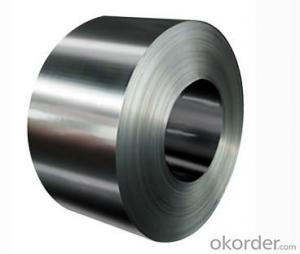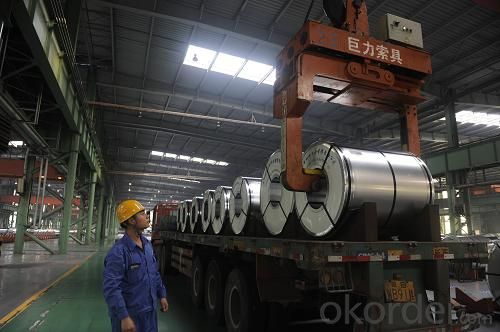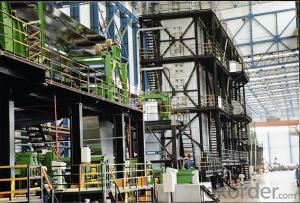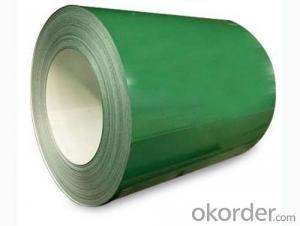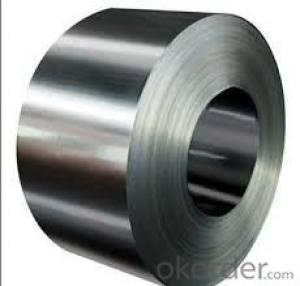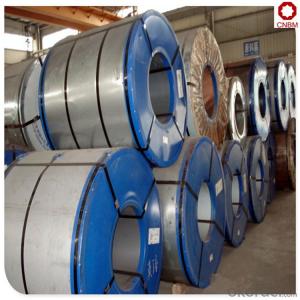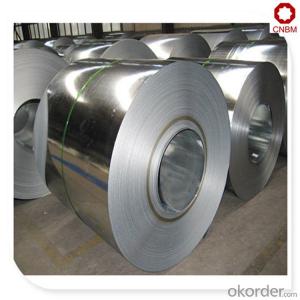Cold Rolled Steel Coil for Your Construction
- Loading Port:
- Tianjin
- Payment Terms:
- TT OR LC
- Min Order Qty:
- 500 m.t.
- Supply Capability:
- 5000 m.t./month
OKorder Service Pledge
OKorder Financial Service
You Might Also Like
Specification
1. Product Description
Hot-rolled coil, we often say that manufacture roll is generally as raw material, at room temperature under the recrystallization temperature of rolling, including board and volume, domestic large steel mills such as baosteel, wisco, angang, etc all can produce.Manufacture is a kind of basic material, wide use of iron and steel manufacture is below average carbon, low carbon steel materials, has a strong processing features, it is widely used in manufacturing car shell, manufacturing a variety of stamping molding parts, such as home appliances shell, internal structure, and so on, is the most important basic steel material.Cold rolling strip mill of linear velocity is accelerated, traditional nodular cast iron guard plate can not adapt to the need of cold rolling mill, the design of rolling guide to solve the defect of the traditional guard board.With the delivery of the goods is called a steel plate, also known as box board or flat;Length is very long and roll delivery of known as the steel belt, also called rolled plate.
2. Main Features
Cold rolled strip, the surface is bright and clean, good processing, used in cars, refrigerators, washing machines and other electrical appliances, and industrial equipment, all kinds of building materials.Along with economic development, cold rolled steel sheet has been referred to as the modern society must be material.Sheet at present the international market is slowly recovering, the recent demand will be better, but the risk factors affecting the operation of domestic cold-rolled market after the National Day is still to strengthen,
3. Excellent Product Image
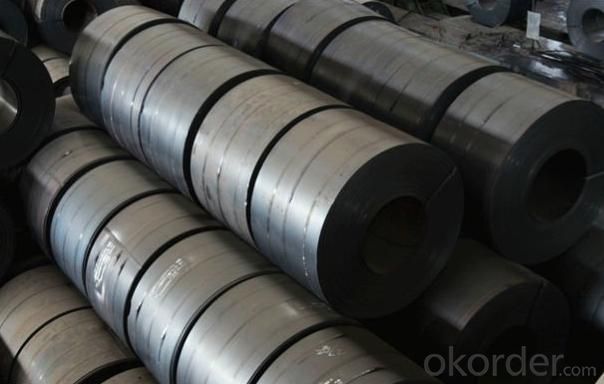
4. Application
such as the export tax rebate policy on surface, associated products hot coil prices high rushed back and receiving pairs of partial low-cost resources to a large extent influence the dealer confidence in holiday look good.Galvanized sheet is on the outside of the manufacture of formation has certain corrosion resistance by way of hot dip galvanized plate, due to its surface with a layer of corrosion resistance of zinc, therefore can be used to process some parts, and don't need to do surface treatment, it has certain corrosion performance, building materials are processed into corrugated board, used in food cans, chemical industry and medical packing, textile and electronic industry and roof, metope, etc.Cold rolled coil is used extensively, can speak is everywhere!
5. FAQ
1.Q: Do you have attended any exhibition?
A: We almost go to Canton Fair and Overseas Exhibitions every year.
2. Q: How to guarantee the quality of the products?
A: We have established the international advanced quality management system,every link from raw material to final product we have strict quality test;We resolutely put an end to unqualified products flowing into the market. At the same time, we will provide necessary follow-up service assurance.
3. Q: How long can we receive the product after purchase?
A: Usually within thirty working days after receiving buyer’s advance payment or LC. We will arrange the factory manufacturing as soon as possible. The cargo readiness usually takes 15-25 days, but the shipment will depend on the vessel situation.
Why choose us?
Pre-sale Service
1. Sample can be offered with sample charge and courier fee by buyer's side.
2. We have full stock,and can deliver within short time.Many styles for your choices.
3. OEM and ODM order are accepted, Any kind of logo printing or design are available.
4. Good Quality + Factory Price + Quick Response + Reliable Service, is what we are trying best to offer you
5. All of our products are produce by our professional workman and we have our high-work-effect foreign trust-worthy sales team.
6. We have 18 years' experience of design, manufacture and sell lingerie, we cherish every order from our honor.
After you choose
1. Count the most efficient shipping cost and make invoice to you at once.
2. Check quality again, then send out to you at 1-2 working day after your payment.
3. Email you the tracking no, and help to chase the parcels until it arrive you.
- Q: What are the different types of steel coil treatments?
- There are several types of steel coil treatments, including pickling, oiling, and galvanizing. Pickling involves immersing the steel coil in an acid bath to remove impurities and scale, resulting in a clean surface. Oiling is the process of applying a thin film of oil to the coil to prevent corrosion during storage and transportation. Galvanizing is a treatment where a layer of zinc is applied to the steel coil, providing excellent protection against corrosion.
- Q: What are the common uses of pre-painted steel coils?
- Pre-painted steel coils are commonly used in various industries such as construction, automotive, and appliances. They are utilized for manufacturing roofing and wall panels, garage doors, ductwork, and other building components. In the automotive sector, pre-painted steel coils are employed to produce body panels, trims, and other exterior parts. Additionally, they find applications in the manufacturing of household appliances like refrigerators, washing machines, and ovens.
- Q: is cold roll or hot roll mill roller is cast steel? or cast iron?
- Casting is a process of forming a part just like forging or rolling are also processes of forming steel. Cast steel can be any grade of steel poured into a sand mold to form a part like a water pump housing in your car. To be classified as steel, the mixture usually contains less than 2% carbon. Cast iron is a mixture that generally contains more than 2% carbon. It also can be poured into a sand mold. There are many grades of iron. Many metals can be cast into shapes like the air intake plenum on your car is probably cast aluminum. Bronze statues are made by pouring molten bronze into a mold. The process used to create a part has an effect of that part's mechanical properties. A casting is weaker than a forging but certain parts cannot be formed by forging. The large diameter rolls used in steel mills to roll steel into thinner plates or sheets is a hot rolled steel that has probably been forged into shape then machined into the final diameter. Some rolls are fabricated from hot rolled steel plates into shape. This allows the ability to add internal cooling paths to keep the roll from overheating.
- Q: What are the dimensions of steel coils used in the transportation equipment industry?
- The dimensions of steel coils used in the transportation equipment industry can vary depending on the specific requirements and applications. However, there are some common dimensions that are widely used. The width of steel coils used in the transportation equipment industry typically ranges from 600mm to 2000mm (24 to 78 inches). This width is chosen to ensure compatibility with the machinery and equipment used for transportation, such as trucks, trailers, and railcars. The thickness of steel coils can vary greatly depending on the specific application and the desired strength of the material. However, common thickness ranges for transportation equipment industry steel coils are typically between 0.5mm and 6mm (0.02 to 0.24 inches). The inner diameter of steel coils used in the transportation equipment industry is typically standardized at either 508mm (20 inches) or 610mm (24 inches). This standardization allows for easy handling and compatibility with the machinery used in the industry. The outer diameter of steel coils can vary depending on the width and thickness of the coil. However, common outer diameter ranges for transportation equipment industry steel coils are typically between 1000mm and 2200mm (39 to 87 inches). It is important to note that these dimensions are not fixed and can be customized based on specific requirements and applications within the transportation equipment industry.
- Q: Can steel coils be cut to length?
- Yes, steel coils can be cut to length using various cutting methods such as shearing, slitting, or sawing.
- Q: What are the common welding techniques used for steel coils?
- Steel coils can be welded using different techniques, such as shielded metal arc welding (SMAW), gas metal arc welding (GMAW), and flux-cored arc welding (FCAW). SMAW, also known as stick welding, involves creating an arc between the welding electrode and the base material using an electric current. The electrode is coated with flux, which shields the weld from atmospheric contamination. This versatile technique can be used for both thick and thin steel coils. GMAW, commonly known as MIG welding, is an automated process that uses a continuous wire electrode and shielding gas. The electrode is fed through a welding gun, and an electric current creates an arc with the base material. This fast and efficient technique is suitable for high-volume production of steel coils. FCAW is a variation of GMAW that uses a tubular electrode filled with flux instead of a solid wire. The flux provides shielding gas and additional fluxing agents to protect the weld from impurities. FCAW is often preferred for welding thicker steel coils due to its better penetration and higher deposition rates. In addition to these techniques, laser welding and electron beam welding can be used for specific applications in steel coil manufacturing. These methods offer precise and high-quality welds but are typically more expensive and require specialized equipment. Ultimately, the choice of welding technique depends on factors such as material thickness, production volume, and specific product requirements.
- Q: How are defects in steel coils detected and resolved?
- Defects in steel coils are typically detected through visual inspections, as well as non-destructive testing techniques such as ultrasonic testing and magnetic particle inspection. Once identified, the defects can be resolved through various methods including grinding, welding, or cutting and replacing the affected area. The specific resolution method depends on the nature and severity of the defect.
- Q: How are steel coils used in the manufacturing of automotive components?
- Steel coils are used in the manufacturing of automotive components by being processed and shaped into various parts such as body panels, frames, suspension components, and engine parts. The coils are typically cut, formed, and welded to create the desired shape and strength required for each specific component. The use of steel coils allows for the production of durable, strong, and cost-effective automotive parts that meet the industry's high standards for safety and performance.
- Q: hi i was doing a little history project on guns. i was just wondering if anyone could help me find out what material was used before steel and why this material wasnt as good as steel ( its faults)thanks for your help
- Gunmetal is a specific type of brass
- Q: What is the role of steel coils in the electrical industry?
- The electrical industry greatly relies on steel coils due to their versatile applications and significant contributions. Transformers, which play a crucial role in power distribution and voltage regulation, utilize steel coils as essential components. These coils facilitate the transfer of electrical energy between circuits, enabling efficient transmission over long distances. Moreover, electric motors and generators heavily rely on steel coils. These coils are wound around the stator and rotor, creating magnetic fields that facilitate the conversion of electrical energy into mechanical energy and vice versa. This conversion process holds immense importance in industries such as automotive, manufacturing, and renewable energy. Steel coils also serve a vital purpose in the production of electrical cables and wiring. They provide strength, durability, and protection to the conductive copper or aluminum wires within the cables, ensuring their structural integrity. This, in turn, guarantees safe and efficient electricity transmission. Additionally, steel coils find application in electrical equipment like solenoids and relays. Their presence enables the creation of magnetic fields that control the flow of electrical current. Furthermore, various electrical appliances, including refrigerators, air conditioners, and televisions, rely on steel coils as crucial components for their proper functioning. In conclusion, the role of steel coils in the electrical industry cannot be overstated. From transformers to motors, generators, cables, and electrical equipment, these coils contribute significantly to the efficient distribution, conversion, and transmission of electrical energy.
Send your message to us
Cold Rolled Steel Coil for Your Construction
- Loading Port:
- Tianjin
- Payment Terms:
- TT OR LC
- Min Order Qty:
- 500 m.t.
- Supply Capability:
- 5000 m.t./month
OKorder Service Pledge
OKorder Financial Service
Similar products
Hot products
Hot Searches
Related keywords
